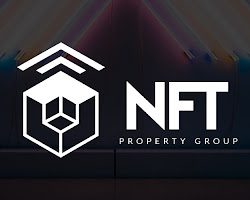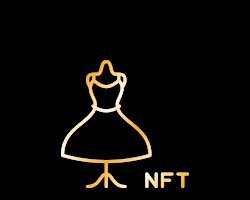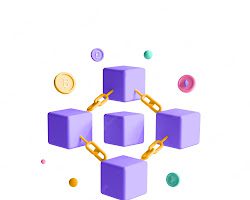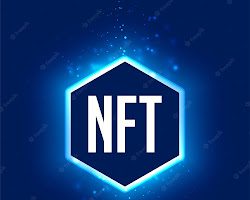Top 10 Use Cases Of NFTs Beyond Art And Collectibles

Non-fungible tokens (NFTs) are unique digital assets that are built on blockchain technology, which is a decentralized and transparent digital ledger. Unlike cryptocurrencies such as Bitcoin or Ethereum, which are fungible and can be exchanged on a one-to-one basis, NFTs are distinct and cannot be exchanged on a like-for-like basis. Each NFT has its own specific value, properties, and ownership record, making it one-of-a-kind.
The underlying technology behind NFTs is the blockchain, which is a distributed ledger that records and verifies transactions across multiple computers or nodes. This decentralized nature ensures the security, transparency, and immutability of NFT ownership.
NFTs can represent a wide range of digital and physical items, including artwork, music, videos, collectibles, virtual real estate, domain names, in-game items, and more. These assets are typically created, bought, sold, and traded on blockchain-based platforms known as NFT marketplaces.
One of the key features of NFTs is their ability to prove ownership and authenticity. Each NFT contains metadata that defines its unique characteristics and ownership details, which are recorded on the blockchain. This metadata can include information such as the creator’s name, description, date of creation, and a digital signature.
Additionally, NFTs often incorporate smart contracts, which are self-executing agreements coded into the blockchain. Smart contracts can define specific rules and conditions for the ownership and distribution of NFTs. For example, an artist can program a smart contract to automatically receive a percentage of the sales whenever their NFT is resold on a secondary market, allowing creators to earn royalties from the ongoing value of their work.
The explosion of NFT popularity can be attributed to several factors. Firstly, NFTs offer a new way for artists, creators, and content creators to monetize their work in the digital realm. It enables direct engagement with fans and eliminates the need for intermediaries such as galleries, record labels, or publishers.
Furthermore, NFTs provide collectors and enthusiasts with the opportunity to own and trade unique digital assets. The scarcity and provable authenticity of NFTs make them appealing to collectors who value ownership of exclusive digital items. NFTs have also gained traction in the gaming industry, allowing players to own and trade in-game items and virtual land.
Critics of NFTs argue that the market may be experiencing a speculative bubble, with prices soaring for certain digital assets without a clear underlying value. They also raise concerns about the environmental impact of blockchain technology due to the energy consumption associated with mining and maintaining the blockchain.
In conclusion, NFTs are unique digital assets built on blockchain technology that enable ownership, authenticity, and provenance of various digital and physical items. They have gained significant attention for their potential to revolutionize the art, music, gaming, and collectibles industries, although their long-term viability and impact are still subjects of ongoing debate and exploration.
Also read: Can You Answer These 9 Basic Questions About Non-Fungible Tokens (NFTs)?
Importance of NFTs for Artists
NFTs have emerged as a significant development for artists, offering them new opportunities to monetize their work, connect directly with their audience, and assert control over their intellectual property. Here are some key aspects highlighting the importance of NFTs for artists:
1. Ownership and Authenticity: NFTs provide artists with a secure and transparent way to establish ownership and authenticity for their digital creations. By tokenizing their artwork as an NFT, artists can prove the originality and uniqueness of their work on the blockchain, making it difficult to forge or plagiarize. This authenticity is crucial in the digital age where copying and sharing of artwork can occur effortlessly.
2. Direct Monetization: NFTs enable artists to directly monetize their work without relying on traditional intermediaries such as galleries, auction houses, or record labels. Artists can sell their NFTs on various online platforms and retain a significant portion of the proceeds. This direct-to-consumer model empowers artists to have more control over the pricing, distribution, and overall value of their artwork.
3. Royalties and Residual Income: Smart contracts associated with NFTs can include royalty mechanisms that automatically allocate a percentage of the resale value to the original artist. This means that artists can continue to earn from their work even after the initial sale. The implementation of royalties through NFTs addresses a longstanding issue in the art world, where artists often do not receive a share of the profits when their work is resold at a higher price.
4. Global Reach and Accessibility: NFTs leverage the internet and blockchain technology to provide artists with a global reach and accessibility to a wide range of collectors and enthusiasts. Artists can connect with potential buyers from around the world without the need for physical exhibitions or geographic limitations. This global exposure can help emerging artists gain recognition and create new revenue streams.
5. Engagement with Fans: NFTs facilitate direct engagement between artists and their audience. Artists can interact with collectors and fans through social media, online communities, and NFT marketplaces. This direct connection allows artists to build a loyal following, receive feedback, and develop a deeper relationship with their supporters. It also provides an avenue for artists to release exclusive content, limited editions, or special experiences for their most dedicated fans.
6. New Creative Possibilities: NFTs open up new creative possibilities for artists to explore innovative and interactive forms of digital art. The programmable nature of smart contracts enables artists to incorporate dynamic elements, unlockable content, or gamified experiences within their NFTs. This fusion of art and technology can lead to unique and immersive artistic expressions that were not possible in traditional mediums.
While NFTs offer numerous advantages for artists, it is important to note that the market is still evolving, and there are challenges and considerations to navigate. These include issues related to environmental sustainability, copyright protection, market volatility, and the need for continued innovation and education in the NFT space. Nonetheless, NFTs have the potential to reshape the art industry by empowering artists and creating new avenues for creativity, ownership, and financial success.
Also real: What Are NFTs: Non-Fungible Tokens and Their Impact on Digital Assets
Top 10 use cases of NFTs Beyond Art and Collectibles
Non-fungible tokens (NFTs) have been making headlines for their use in art and collectibles, but their potential extends far beyond these popular use cases. NFTs can be used to represent ownership of a wide variety of assets, including real-world items, digital goods, and even intangible experiences.
Here are 10 of the top NFT use cases beyond art and collectibles:
- Ticketing
NFTs can be used to create secure and tamper-proof tickets for events such as concerts, sporting events, and conferences. NFT tickets can be easily transferred between buyers and sellers, and they can also be used to verify the authenticity of tickets. 
- Supply chain management
NFTs can be used to track the provenance of goods and products throughout the supply chain. This can help to ensure product authenticity and prevent counterfeiting. NFTs can also be used to record data about the environmental impact of products, making it easier for consumers to make informed purchasing decisions.
- Real estate
NFTs can be used to represent ownership of real estate properties. This could make it easier to buy, sell, and rent property, and it could also help to reduce fraud. NFTs could also be used to create digital twins of real-world properties, which could be used for virtual tours and other purposes.
- Gaming
NFTs are already being used in gaming to represent in-game items such as weapons, skins, and characters. NFTs could also be used to create new gaming experiences, such as games that allow players to own and trade virtual assets.
- Fashion
NFTs can be used to create digital representations of fashion items such as clothing, accessories, and even entire outfits. These digital items can be sold and traded, and they can also be used to create virtual fashion shows and other events. 
- Music
NFTs can be used to sell music in a way that gives artists more control over their work. NFTs can also be used to create unique experiences for fans, such as access to exclusive content or meet-and-greets with artists.
- Decentralized finance (DeFi)
NFTs can be used in DeFi applications to represent a variety of assets, such as loans, insurance policies, and even votes. This could help to make DeFi applications more secure and transparent.
- Philanthropy
NFTs can be used to create unique fundraising experiences for charities and other organizations. For example, an organization could auction off an NFT that gives the winner exclusive access to an event or experience.
- Education
NFTs can be used to create digital certificates and other educational credentials. This could help to make educational records more secure and tamper-proof. NFTs could also be used to create new learning experiences, such as gamified courses or virtual classrooms. 
- Web3 identity
NFTs can be used to create decentralized digital identities. This could help to protect users’ privacy and security, and it could also make it easier for users to access online services.
These are just a few of the many potential use cases for NFTs beyond art and collectibles. As the technology continues to develop, we can expect to see even more innovative and creative ways to use NFTs in the years to come.
Benefits of using NFTs
Using non-fungible tokens (NFTs) offers several benefits across various domains. Here are some key advantages of using NFTs:
1. Authenticity and Proof of Ownership: NFTs provide an immutable and transparent record of ownership and authenticity. Each NFT is uniquely identified and recorded on the blockchain, establishing a verifiable and tamper-proof trail of ownership. This is particularly valuable in the digital realm, where reproductions and forgeries can be easily created. NFTs help artists, creators, and collectors prove the originality and uniqueness of their digital assets.
2. Direct Artist-Customer Interaction: NFTs enable direct interaction between artists, creators, and their customers or fans. By leveraging NFT marketplaces and social media platforms, artists can engage directly with their audience, receive feedback, and build a community around their work. This direct connection enhances the artist-customer relationship, fosters fan loyalty, and provides valuable insights for artists to refine their creations.
3. Increased Monetization Opportunities: NFTs offer new avenues for artists, content creators, and intellectual property holders to monetize their work. Artists can sell their NFTs directly to collectors, eliminating the need for intermediaries such as galleries or record labels. NFTs also introduce the concept of royalties, where artists can earn a percentage of subsequent sales of their work, providing a sustainable source of income even after the initial sale.
4. Global Access and Market Reach: NFTs leverage the internet and blockchain technology to enable global access to digital assets. Artists and creators can reach a global audience without the limitations of physical distribution. This expanded market reach provides opportunities for emerging artists to gain recognition and generate income. Similarly, collectors and enthusiasts can access and purchase NFTs from artists around the world, allowing for a diverse and inclusive art ecosystem.
5. Immutable Ownership Records: The use of blockchain technology ensures that ownership records for NFTs are secure, transparent, and cannot be altered or manipulated. This eliminates disputes or confusion regarding ownership and provenance, which are common challenges in traditional art markets. The immutability of ownership records instills trust and confidence among buyers and collectors.
6. Programmable and Interactive Features: NFTs can incorporate programmable features through smart contracts, enabling new forms of interactivity and engagement. Artists can embed unlockable content, special experiences, or utility functions within their NFTs. This programmability opens up creative possibilities, allowing artists to create dynamic and evolving digital experiences for their customers.
7. Secondary Market Opportunities: NFTs have created vibrant secondary markets where collectors and investors can trade and resell digital assets. The resale value of NFTs can increase over time, enabling collectors to benefit from the appreciation of their digital holdings. Artists can also benefit from this secondary market by receiving royalties on subsequent sales, creating ongoing revenue streams.
While NFTs offer numerous benefits, it’s important to consider challenges and potential risks associated with the technology, such as market volatility, environmental impact, and the need for continued innovation and education. Nonetheless, NFTs have the potential to reshape industries, empower creators, and create new opportunities for ownership, monetization, and engagement.
Also read: Non-Fungible Tokens and Climate Change, How They Interact?
Future of NFTs
The future of non-fungible tokens (NFTs) holds great potential for transformative changes across various industries. Here are some key aspects that may shape the future of NFTs:
1. Expansion into New Industries: While NFTs have gained significant popularity in the art, music, and gaming sectors, their applications are likely to expand into new industries. Industries such as fashion, sports, real estate, education, and journalism are exploring ways to leverage NFTs to enhance ownership, authentication, and monetization of digital assets within their respective domains. This diversification is expected to broaden the adoption and acceptance of NFTs as a mainstream technology.
2. Integration with Augmented Reality (AR) and Virtual Reality (VR): The integration of NFTs with AR and VR technologies holds immense potential. NFTs can serve as digital passports that authenticate and unlock virtual experiences or augmented content associated with physical objects. For example, collectors could use their NFTs to access augmented reality exhibitions or virtual reality galleries. This convergence of NFTs and immersive technologies may redefine the way we experience art, collectibles, and entertainment.
3. Enhanced Utility and Interoperability: Future developments in NFTs may focus on increasing their utility and interoperability. Currently, most NFTs are primarily used for ownership and provenance. However, efforts are underway to imbue NFTs with additional functionalities and interoperability across different platforms. This could involve integrating NFTs with decentralized finance (DeFi) protocols, allowing for collateralization, lending, and borrowing against NFTs. Interoperability would enable seamless transfer of NFTs across various blockchain networks and marketplaces, expanding liquidity and facilitating broader adoption.
4. Sustainability and Environmental Considerations: The environmental impact of blockchain technology, particularly due to the energy consumption associated with mining cryptocurrencies like Bitcoin, has been a topic of concern. As the popularity of NFTs continues to grow, there will be an increased focus on developing sustainable solutions. Efforts are already underway to explore more energy-efficient blockchain networks and consensus mechanisms that can support the NFT ecosystem without compromising environmental sustainability.
5. Regulation and Legal Frameworks: As NFTs gain prominence, governments and regulatory bodies are likely to develop frameworks and guidelines to address legal and regulatory aspects of the NFT market. This includes issues related to intellectual property rights, consumer protection, taxation, anti-money laundering (AML), and investor disclosures. Regulatory clarity can provide a more stable and secure environment for artists, creators, collectors, and investors, while also protecting against fraudulent activities or scams.
6. Integration with Web3 and Decentralized Technologies: NFTs are closely intertwined with the concept of Web3 and decentralized technologies. The integration of NFTs with decentralized applications (dApps) and decentralized autonomous organizations (DAOs) can revolutionize how creators and consumers interact, collaborate, and transact. NFTs can be used as governance tokens, granting holders voting rights and influence over decisions within decentralized communities.
7. Evolution of Marketplaces and Infrastructure: The NFT marketplaces and infrastructure are expected to evolve and become more user-friendly, secure, and efficient. Improved marketplaces will offer better discovery mechanisms, curation tools, and social features to enhance the user experience. Additionally, advancements in blockchain scalability solutions will enable higher transaction throughput and lower fees, making NFTs more accessible to a wider audience.
The future of NFTs will be shaped by technological advancements, regulatory developments, market dynamics, and evolving user preferences. While the potential of NFTs is vast, it is essential to address challenges such as market volatility, scalability, sustainability, and inclusivity to ensure a sustainable and inclusive future for this transformative technology.
Also read: Non-Fungible Token Bible: Everything You Need to Know About Investing in NFTs




























































